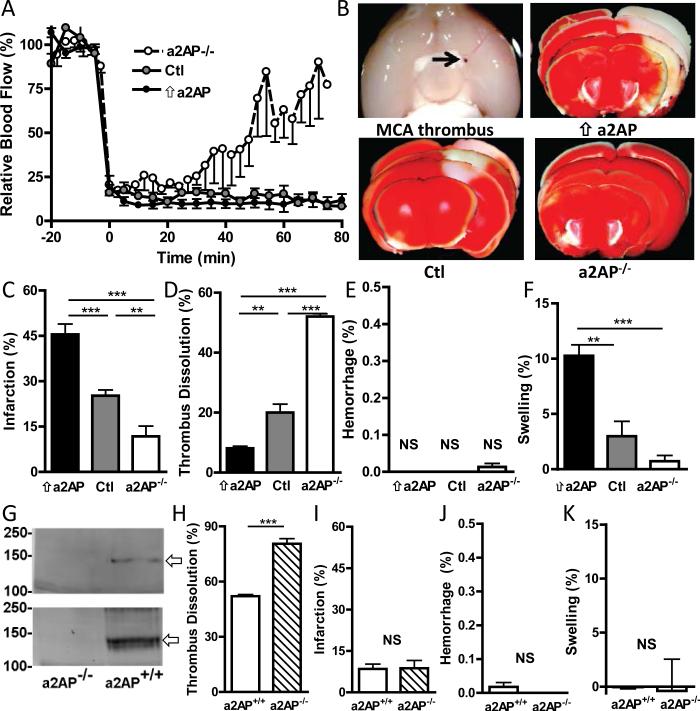Figure 1.
The effects of circulating and thrombus-bound a2AP on brain infarction, swelling and dissolution of the culprit MCA thrombus. A) Changes in relative cerebral blood flow (mean ± SE) in the ischemic hemisphere in mice with elevated circulating levels of a2AP (⇑a2AP), normal a2AP levels (Ctl) and absent a2AP (a2AP−/−). B) Representative images of a proximal middle cerebral artery thrombus (arrow), and of TTC-stained brain slices showing viable (red) and infarcted tissue (white) 6 h after thromboembolism. Percent C) infarction, D) dissolution of the MCA thrombus, E) hemorrhage and F) swelling of the ischemic hemisphere 6 h after placement of an 125I-fibrin labeled MCA thrombus (containing normal levels of a2AP). G) Immunoblot analysis of a2AP in thromboemboli formed from a2AP+/+ and a2AP−/− mice. Immuno-stained bands consistent with thrombus-bound a2AP (fibrin-cross linked a2AP, arrows) in a2AP+/+ but not a2AP−/− clots. Top panel, immunostaining with polyclonal anti-a2AP antibody; bottom panel, immunostaining with pooled monoclonal a2AP antibodies. H-K) Effects of thrombus-bound a2AP in vivo on the percent H) MCA thrombus dissolution, I) infarction, J) hemorrhage and K) swelling in brains from a2AP−/− mice with MCA thromboemboli containing normal a2AP (a2AP+/+) or no a2AP (a2AP−/−), n = 7 per group, see Methods for additional details. Data in C-F, H-K represent the means ± SE. **p≤0.01, ***p≤0.001, NS not significant.

